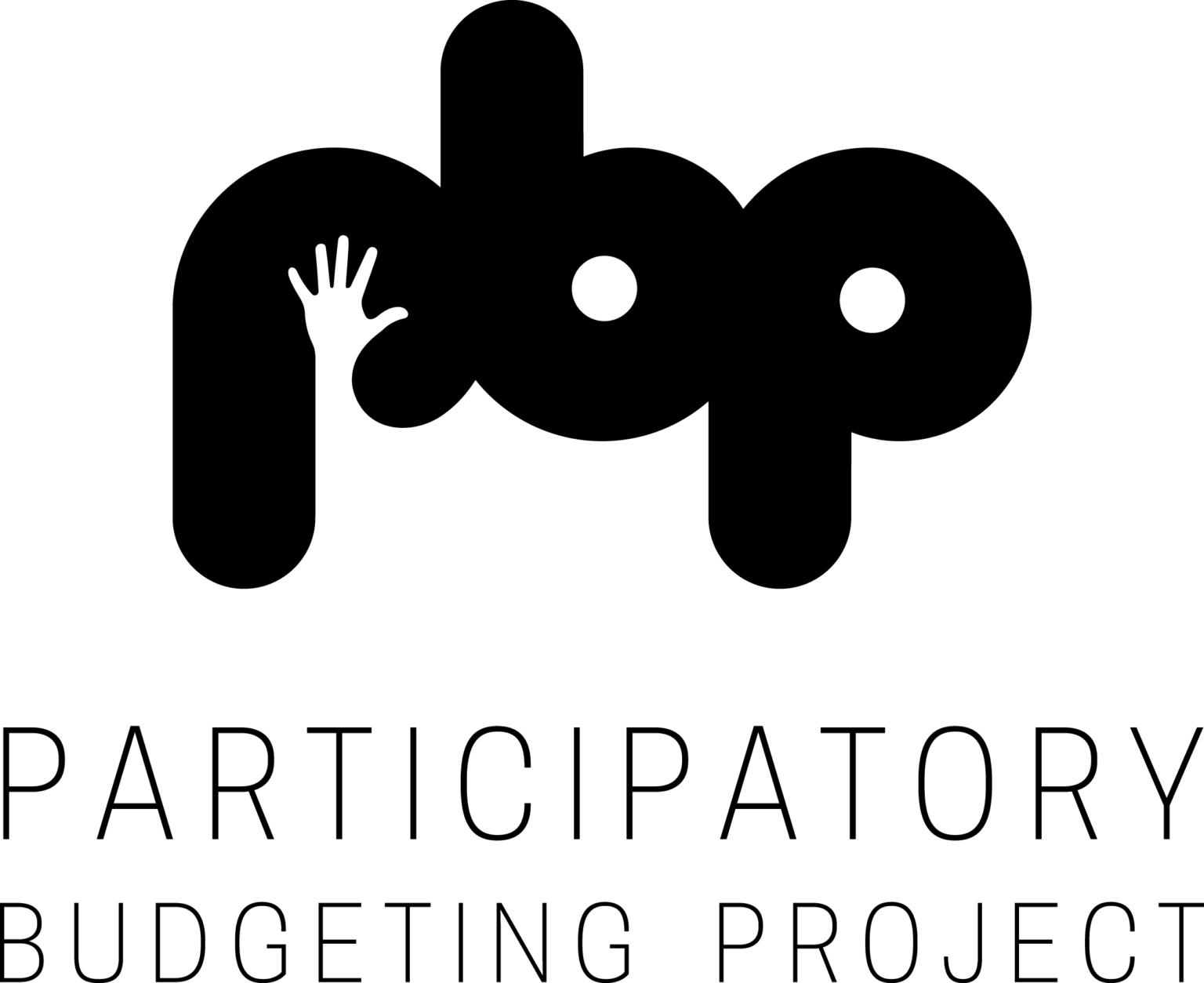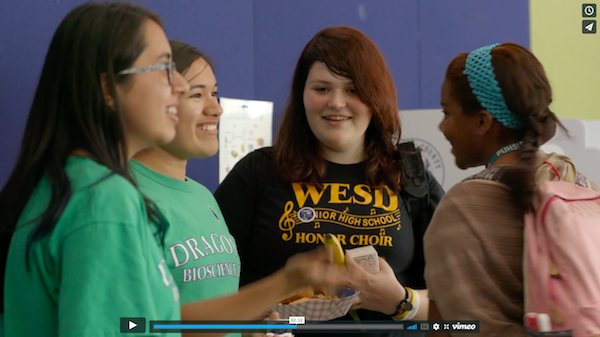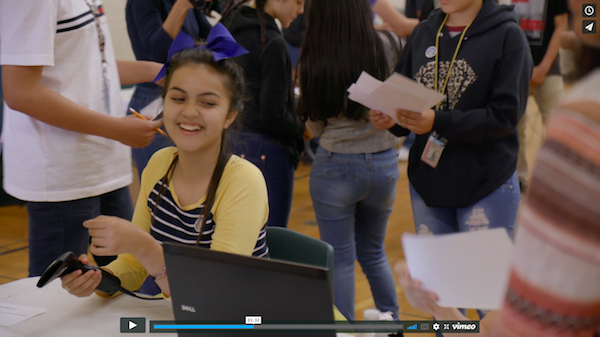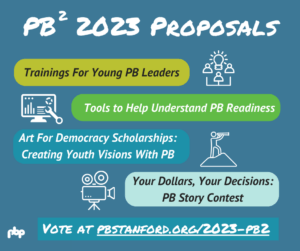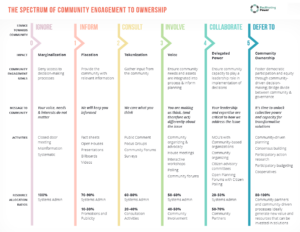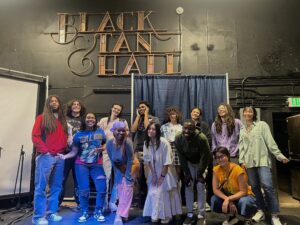Top 5 reasons Participatory Budgeting improves students’ education.
By: Shari Davis and Dylan Welch
Autumn is here — and with it, a renewed conversation about how educators, parents, and communities improve their students’ education. Often in this discussion, solutions come down from on high through public officials or people within the educational system. This fall, visionary school leaders will be challenging that top-down norm by showing that empowering students and families to directly decide what their schools need, through participatory budgeting (PB), can drastically improve the quality of their schooling.
What is PB? Instead of government and school officials making every budgetary decision, PB gives real people real power over budget decisions in their schools and communities. “It really is putting your money where your mouth is,” says Christopher Oglesby, former teacher and a school administrator at Carl Hayden Community High School in Phoenix, AZ. “We’re taking taxpayer money that ordinarily the school board would decide how to spend, and we’re empowering our students to decide how that money should be spent on our campuses.”
Schools all across the country have committed to listening to their students, and to acting on their ideas. In Tacoma, WA, 1,500 students from Lincoln High School get to pitch and vote on ideas on how to spend $60,000 to improve their school. In New York, students and families at over 600 schools will decide how to spend more than $1 million, starting with a few dozen schools this year. Several elementary schools and colleges across the CUNY system have already tried this approach.
What are the top 5 reasons I should start Participatory Budgeting in my school?
#1: It’s College and Career Readiness.
College, like the professional world, looks for critical thinkers that are engaged in their community. Students who engage in participatory budgeting in schools check both those boxes. Students explore the views within their community, discover issues that community cares about, and hear the community’s suggestions. Students within that community then build out research and essential quantitative analysis skills to assess the requirements and efficacy of each solution.
During all of this, they’re also learning what it truly means to be an active, empathetic, effective community member. While that may sound like a “soft skill”, its an also an essential, multi-faceted one. Participating in PB gives students life skills through SEL (social and emotional learning) that allow them to learn on their own throughout life. Some key learning skills that PB gives students are goal setting, persistence, self-awareness, motivation, help-seeking, self-efficacy, progress monitoring, time management, collaborative learning, etc.
After all, “It’s easy to pay lip service to Democracy,” says Christopher, a teacher at Phoenix public schools, “but to actually practice it, and put systems in place to promote it? Especially among young people? … That’s different.” Being able to pull apart the theoretical from the practical in a college essay because of their experiences in PB will put students ahead of their peers.
#2: Real-world Problem-Solving Builds Skills and Confidence
Traditionally, students have been taught at a certain level of abstraction. Students may be tested to find the statistical standard deviation, for example, but never have to use it practically. But even for more basic skills, it’s a common complaint that civics and imperative household skills like accounting aren’t taught in public education. Even Chance the Rapper knows “they ain’t even teaching taxes in school.”
Schools with PB, on the other hand, impart some profoundly important skills on young people. “[PB] taught us to budget and prioritize our money… to work in teams, and practice public speaking,” said Kya, a member of the PB steering committee at her school in Philadelphia. Instead of being shy and passive, “it got [us] to get up and say, ‘This is what I want, and if you’re gonna listen, I’m gonna tell you.’”
That’s because, in the context of schools, PB is a form of project-based learning, a form of experiential learning that cultivates students’ critical thinking, unleashes their creativity, all through learning by doing. It gives students a rare edge over their national peers: they’ve solved actual, tangible problems in their community.
#3: It Makes Democracy and Voting Real
“My first thought was: this is revolutionary,” says Jacinta Ojevwe, the Coro Youth Participatory Budgeting Fellow. “To breathe life into this revolution, people—young people—have to be involved.” PB’s revolution is reintroducing people of all ages, but especially the young, to the idea that democracy is a contact sport, not a game played by someone on the other side of a ballot box.
As adults, it can be hard to remember how we felt about voting before we turned 18. For those who had civic spirit early on, they may have been excited for it. For others, it might have seemed intimidating, inaccessible, or just not very important. That why having an actively engaged mindset early on can change a young person’s life. PB makes the stakes and experience of voting real for people who haven’t aged into the right to vote. The sooner young people are invested in a more active vision of democracy, the healthier our democracy will be in the long run.
The health of a community’s civic spirit can be hard to measure across a whole country, but when trying to gauge in the context of a single school, it’s palpable. Through a partnership with the Maricopa County Recorder’s Office, 786 Phoenix Union high school students registered as Arizona voters during their PB Vote, creating a direct pathway between participation in PB and voting in regular elections.
“Some of our students have said, ‘Oh, [voting] wasn’t that scary. Now I can go vote next time or once I turn 18. I’ll know what to do.’” says Cyndi Tercero Sandoval, the Student Support Services Manager and PB Coordinator at Phoenix Union High School District. “This is an opportunity for students to learn from real life experience, connect it to what they’re learning in the classroom, and really see the power of using their voice.”
#4: It Creates School Connectedness, and Builds Meaningful Relationships Across Social Groups & Grade Levels
Life in high school may sometimes leave students feeling put down and divided. Many of us can remember the familiar ways that school separated us into cliques based on interests, tastes, cultures or styles. In TV and movies, we’re also familiar with the toxic ways that separation manifests itself: bullying, alienation, and vilification of the “other”, whoever that might be.
That does not make for a highly enriching or successful learning environment. By the time students leave institutions of learning, they should be able to embrace and learn from differences, not be repulsed and scarred by them. Instead, as studies have shown, schools should create structures that encourage and help students make relationships across differences, whether they’re about social groups, grade levels, gender or race. That’s an environment in which the school community, as a whole, is more thoroughly and meaningfully connected.
“I am constantly talking about how PB changes campus culture and builds a strong school community,” says Cyndi Tercero, Student Support Services Manager of Phoenix Union High School District. During the PB process, all ideas have equal footing, and everyone has a stake in making their shared community better.
“You know, there’s a lot kids that are popular, and then there are those kids that are kind of secret,” explained Kya of Philadelphia. Instead of the proverbial lunch tables separating “popular kids” from “outsiders”, PB had those kids “really interacting, and talking and saying ‘Hey, this is what I like. This is what I want. This is what I think is cool!’”
#5: It Elevates Student Leaders
When students have the tools to understand democracy on a nuts-and-bolts level early, they’re better equipped to be transformative change agents in their communities. Importantly, it teaches them that change is not easy, and it only comes through consensus. When Agustin began PB as a member of his school’s steering committee in Phoenix, he “thought it was gonna be way easier, it was gonna be quick. I thought I knew what everyone wanted, because I knew what I wanted. Everybody is going to [propose] this. [But]… actually going out there and figuring out what the students want opens your mind.”
Beyond students connecting with one another, PB fosters conversation and connection among the students, educators, and family members as they decide on the most impactful ways to spend REAL money, together. Earlier this year, we heard from Claire Pearce, a fourth grade parent, who participated in PB at her daughter’s elementary school. “It was rewarding to me as a parent to listen to the kids… PB in Schools creates this forum that engages people of different generations and points of view in meaningful discussions that have a tangible impact.”
PB is especially powerful in this way because it not only elevates leaders, it reveals leadership among people who wouldn’t otherwise be disposed to discover it within themselves. That is to say, it builds a healthy sense of self-worth and groundedness within the context of the school community. “I was actually surprised at how these kids rose to the occasion,” said Liz Meiris, a Philadelphia High School teacher, “that maybe they’re not willing to raise their hands in class, but when it was something that was important to them, when it was something that the entire class was doing, then they weren’t gonna be the one kid to say, ‘I’m not standing in front of the whole school.’”
Ready to start PB in your school?
Take the first step here. We’ll send you resources and materials to send on to allies and decision makers at your school.

